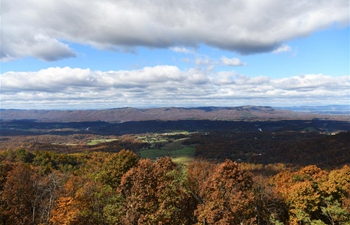WASHINGTON, Nov. 4 (Xinhua) -- Researchers from Massachusetts Institute of Technology (MIT) developed an autonomous system for a fleet of drones to collaboratively search lost hikers in forests.
In a paper to be presented at the incoming International Symposium on Experimental Robotics conference, the researchers described the drones using only on-board computation and wireless communication, requiring not GPS, according to MIT's official website.
Helicopters and drones can't get a glimpse through the thick tree canopy and ordinary autonomous drones that can bob and weave through trees demand GPS signals that can be unreliable in forest.
The new technique equipped each quadrotor drone with laser-range finders for position estimation, localization, and path planning.
The drone can create its own 3-D map of the terrain. Algorithms help it recognize unexplored and already-searched spots, so it knows when it's fully mapped an area.
Then, an off-board ground station combines individual maps from multiple drones into a global 3-D map that can be monitored by human rescuers.
When located, the drone would tag the hiker's location on the global map and rescuers could then use this information to plan a rescue mission.
"Essentially, we're replacing humans with a fleet of drones to make the search part of the search-and-rescue process more efficient," said the paper's first author Tian Yulun, a graduate student at MIT.
The researchers tested multiple drones in simulations of randomly generated forests, and tested two drones in a forested area within NASA's Langley Research Center.
In both experiments, each drone mapped a roughly 20-square-meter area in about two to five minutes and collaboratively fused their maps together in real-time.

















